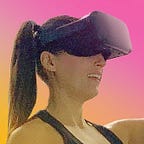Guidelines for Enhancing Design Communications with Quotes
Ever notice when another person chimes in to echo your discussion point, it resonates more impactfully with everyone (and especially if that person has authority)?
You can replicate this effect in your presentations, briefs and writing through strategic use of quotes. The key word here is strategic. As long as you use quotes sparingly and intentionally — and never as padding or an appeal to authority — they can powerfully underscore your messaging.
Leverage the following guidelines and principles when deploying quotes in your communications:
Master Your Timing
Figure out when the right moment in your piece offers the best opportunity to leverage a quote, using the playbook below. But again, deploy sparingly — try to limit your use of quotes to one or maybe two of the following timeframes.
- Prime at the outset. Prep your audience’s unconscious with a quote at the beginning of your presentation or writing. Novels sometimes tease the reader with a mysterious quote at the outset, setting the theme and stage for the story. Pique your audience’s curiosity and set the tone of your message by starting off with a thought-provoking or abstract quote, or pick a broad statement that everyone will agree with if you’re looking to build consensus. Salespeople famously use ‘yes-ladders,’ which begin with questions that are obvious and easy to agree with, getting their audience to form a head-nodding pattern. This primes people to be more agreeable to your main proposition as it develops.
- Transition in the middle. Wrap a section transition or change of topic with a quote. After you’ve worked through a complete line of thought in your messaging, but before moving on to a new section, it can be helpful to afford the audience a moment to reflect on, and cement, everything you just said. What better way to do that than with a breezy and digestible quote that sums it up?
- Re-center after a heavy section. Pull your audience’s attention back in with a quote after taking them through complicated or dense information. People can only process seven main ideas plus or minus two, according to the famous research of Harvard Psychologist George Miller. If you’re taking your audience through a long or complex amount of information, their attention will shut down after too many concepts. To pull them back in, position a quote as a breath of air to help them pause and plug in again before you move forward.
- Reinforce at the conclusion. Hammer home your main conclusion with a single, powerful quote. When working your way up to a call to action or ask from the audience, make your main statement … and double the effect by either preceding or ending with a quote that backs your statement.
Also, Be Sure To ….
In addition to curating timing, keep in mind these additional considerations.
- Allow the audience sufficient time to read and absorb. If you’re presenting live, it may help to read the quote aloud; the point of the quote is to be read, so make sure you afford your audience enough time to read it and consider it before rushing ahead. Short quotes are great, but if you need to use a longer quote, consider bolding or highlighting one or two essential words or phrases to help focus attention.
- Cite diverse perspectives. Your communication will only be strengthened by incorporating voices from all walks, backgrounds and disciplines. Reinforcing your argument with a quote that relates, but comes from an entirely different industry or domain can be very profound.
- Isolate and emphasize your quote visually, by setting it apart on its own slide, or sizing it up to stand out in longform. Don’t bury your quote on a slide already overpopulated with bullets. Use powerful visual type treatments, such as high-contrast styling or layering over full-bleed photos.
Therese Mushock leads with deep enthusiasm for the technology times we live in as a people-focused design leader for a large technology company in California. She earned her M.F.A. in Design in 2010 from the Savannah College of Art and Design, co-founded an innovation lab for an enterprise software company and designed the first wearable app to win an Appy® Award in 2015. Therese regularly advocates for diversity, equity and inclusion in product development. Follow her on Twitter.
